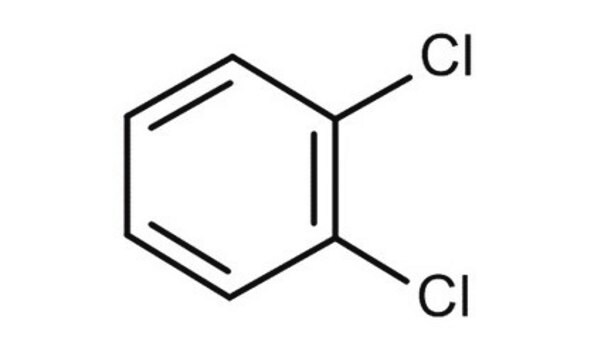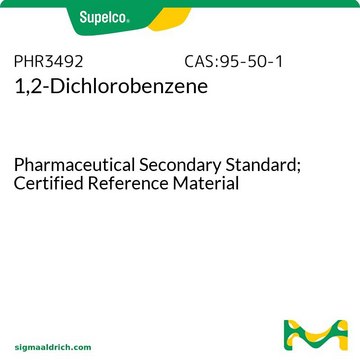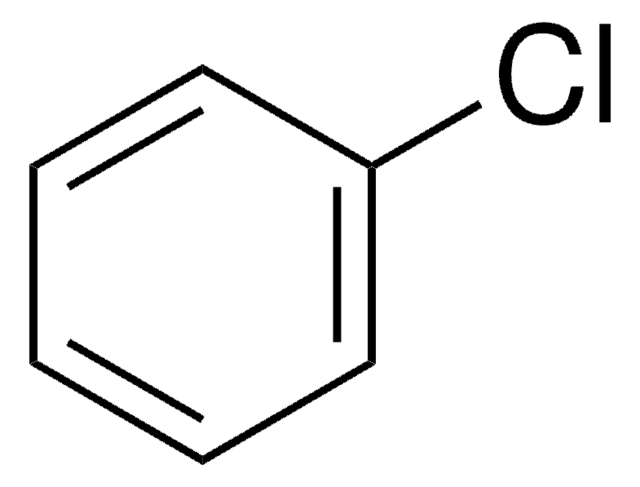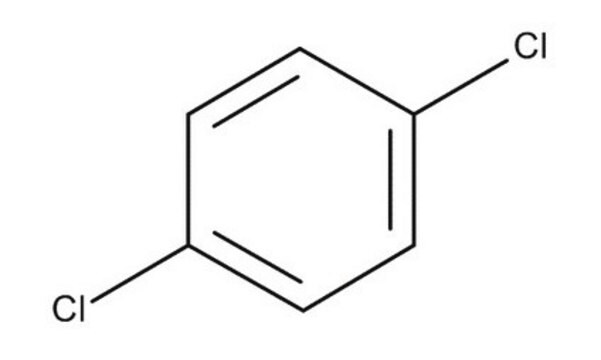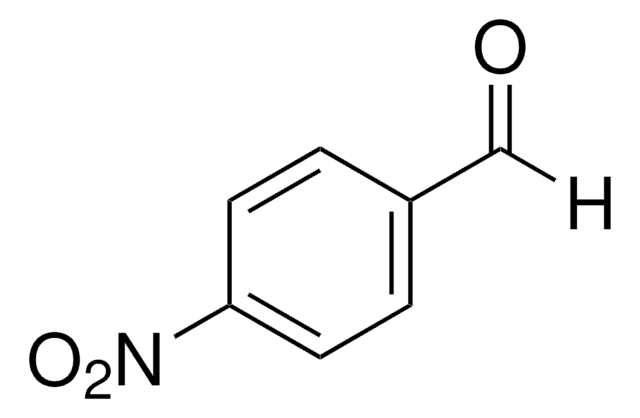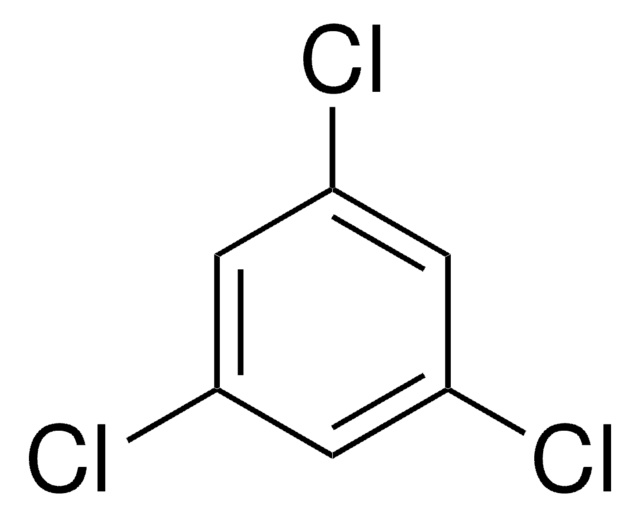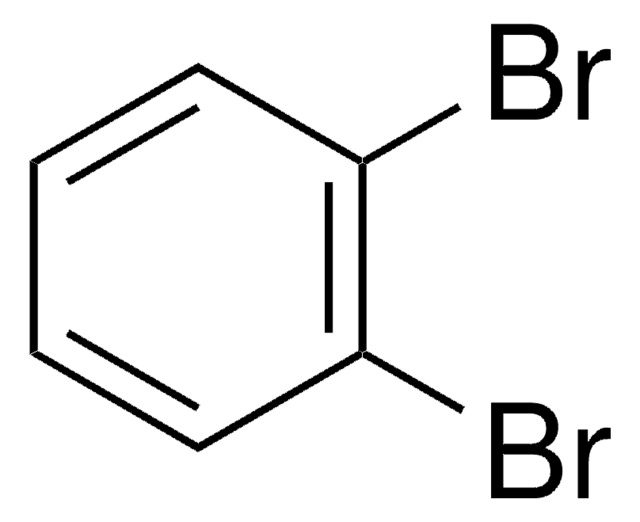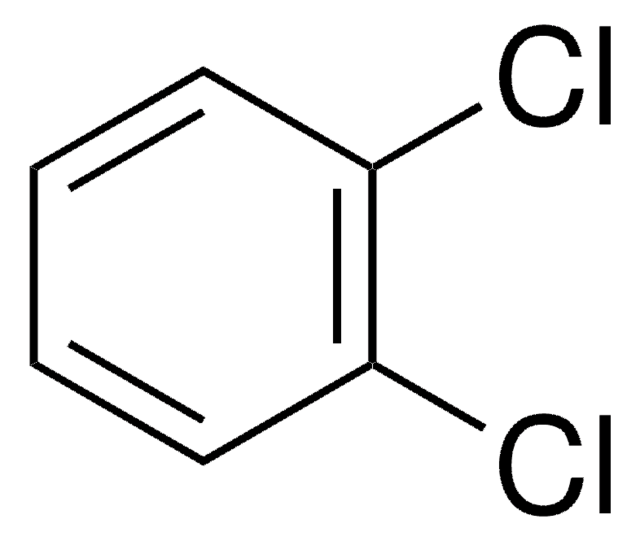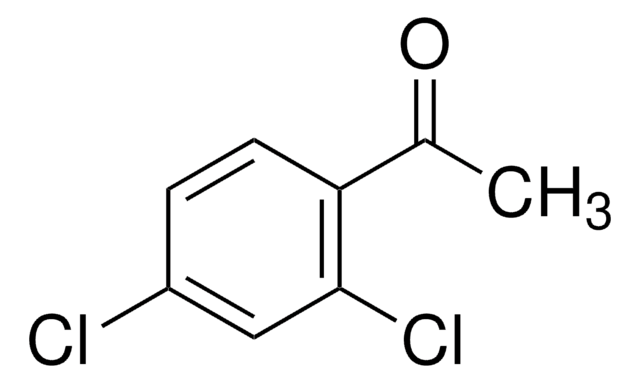113808
1,3-Dichlorobenzene
98%
Sinonimo/i:
m-Dichlorobenzene
About This Item
Prodotti consigliati
Tensione di vapore
5 mmHg ( 38.8 °C)
Livello qualitativo
Saggio
98%
Forma fisica
liquid
Indice di rifrazione
n20/D 1.546 (lit.)
P. eboll.
172-173 °C (lit.)
Punto di fusione
−25-−22 °C (lit.)
Solubilità
H2O: soluble 1.23 mg/L
alcohol: soluble
diethyl ether: soluble
Densità
1.288 g/mL at 25 °C (lit.)
Stringa SMILE
Clc1cccc(Cl)c1
InChI
1S/C6H4Cl2/c7-5-2-1-3-6(8)4-5/h1-4H
ZPQOPVIELGIULI-UHFFFAOYSA-N
Cerchi prodotti simili? Visita Guida al confronto tra prodotti
Categorie correlate
Applicazioni
Avvertenze
Warning
Indicazioni di pericolo
Consigli di prudenza
Classi di pericolo
Acute Tox. 4 Oral - Aquatic Chronic 2
Codice della classe di stoccaggio
10 - Combustible liquids
Classe di pericolosità dell'acqua (WGK)
WGK 2
Punto d’infiammabilità (°F)
152.6 °F - closed cup
Punto d’infiammabilità (°C)
67.0 °C - closed cup
Dispositivi di protezione individuale
Eyeshields, Faceshields, Gloves, type ABEK (EN14387) respirator filter
Scegli una delle versioni più recenti:
Possiedi già questo prodotto?
I documenti relativi ai prodotti acquistati recentemente sono disponibili nell’Archivio dei documenti.
I clienti hanno visto anche
Protocolli
US EPA Method TO-17: GC Analysis of Volatiles on VOCOL® after Collection/Desorption using Air Toxics Tube
Il team dei nostri ricercatori vanta grande esperienza in tutte le aree della ricerca quali Life Science, scienza dei materiali, sintesi chimica, cromatografia, discipline analitiche, ecc..
Contatta l'Assistenza Tecnica.


